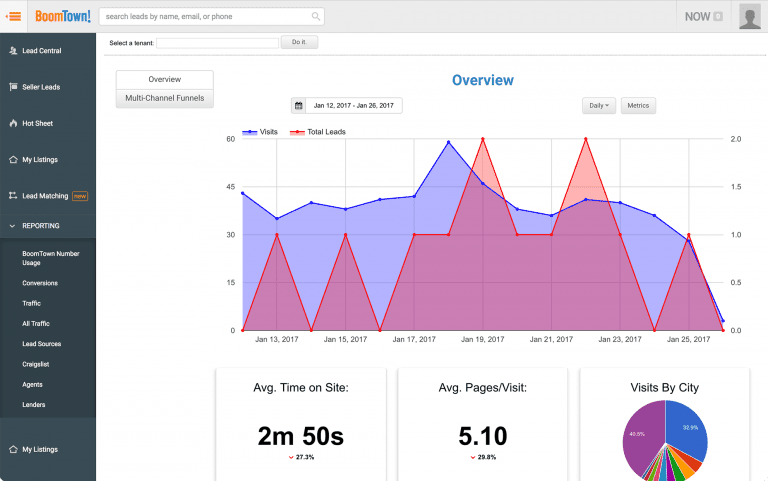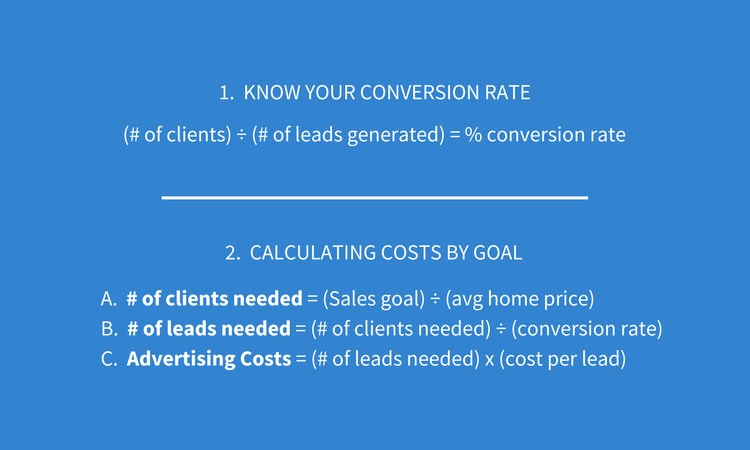You are viewing our site as an Agent, Switch Your View:
Agent | Broker Reset Filters to Default Back to ListWhy the Top Agents Leverage Success Metrics in a Shifting Market
March 22 2019
3 key metrics you should be tracking
 There's been a lot of buzz lately about the shifting market, and you've likely been hearing steps and strategies to help you be prepared for what may come in your local market. Whether it just shifts slightly to a more balanced, normalized market, or there's a noticeable lull in home sales, the name of the game is being fully prepared at any time with a solid business model, that's evergreen and "shockproof," so that your profitability doesn't suffer.
There's been a lot of buzz lately about the shifting market, and you've likely been hearing steps and strategies to help you be prepared for what may come in your local market. Whether it just shifts slightly to a more balanced, normalized market, or there's a noticeable lull in home sales, the name of the game is being fully prepared at any time with a solid business model, that's evergreen and "shockproof," so that your profitability doesn't suffer.
One tactic that will help solidify your profitability (no matter the market), is clearly tracking and measuring success metrics.
We're still in Q1, and the busy spring season is rapidly approaching, so it's the perfect time to take a step back and make sure you're being diligent about some of the boring stuff (like these metrics and numbers), so you can ultimately enjoy the good stuff, like more closings and a higher transaction volume at the end of the year.
Response Time
Did you know that the industry average response time for a real estate lead is over 15 hours? Yikes.
We all know how the consumer shopping experience happens these days: you're on the web, you're searching for a property and you're focused on that task for 20, maybe 30, minutes tops. But what are you up to 10, 15 hours later? You've moved on! You're not interested in chatting. Or, even worse, you've already heard from a competitor.
Speed-to-lead, that age-old adage that you're sick of hearing? It exists for a reason.
So, ask yourself: Are you measuring your own response time, and are you actively trying to improve it? These are the things that are going to set apart the top-tier agents during a market shift when the flow of leads to your pipeline might not be quite as healthy.
Take a look at your current process for engaging leads. Do you have a technology system in place, like a CRM, that notifies you the second a lead registers on your site? And, if so, is it mobile so that wherever you are you can take a minute to reach out? Maybe you have an ISA, an assistant or a virtual assistant that's prospecting for you and engaging those new leads. Well, their response time is your response time! So make sure you have a system in place to track how quickly someone is getting in front of those leads.
So once you've got an idea of what your average response time is, work on improving it! Try to get it under five minutes, and if you're having trouble doing that, you might need to consider hiring an assistant or an ISA that can help you prospect and stay on top of new leas. Or perhaps you're generating too many leads and you don't have the bandwidth to keep up with them. In that case, consider scaling back so you can work with a smaller pool that will actually convert and close a deal with you. Because a large pool of leads that don't convert really just isn't smart business.
Here are a few questions you can answer to determine how many leads you really need:
- How many leads do you need to get an appointment?
- How many appointments does it take for you to close a deal?
- What is your conversion rate?
- How big is your current database?
- How much time are you willing to spend prospecting?
Follow-up and Lead Nurture
Obviously, response time is just one piece of the puzzle – and the real leg work comes with follow-up and effective lead nurturing. Now, more than ever, this is super important. Today's real estate industry is all about the consumer experience. You hear the words "red-carpet," or "white-glove experience" thrown around, and that's because we live in a digital time now where everything is instant and readily available.
You can have Whole Foods groceries delivered to your house within two hours, at the click of a button!
So to keep up with consumer demand, you have to be available and you have to be communicative. You also have to be one step ahead of them, anticipating their needs, not just reacting to what they're asking for.
This is why you need to be smart and meticulous with follow-up and nurture plans.
1. Organize Your Database
It's impossible to measure if your follow-up needs work when you don't have a clear process in place. If you're not using a CRM, whatever strategy you have for organizing your leads and pushing them through the funnel – stay on top of it. (Also, consider investing in technology to automate those tasks and allow yourself to be more proactive.)
For everyone else that is using a CRM, spend the time necessary to get your lead flow organized. Clean up your categories and tags so that your database is organized into straightforward segments like:
- Want to buy or sell now
- They're looking, but not ready to act
- Searching a few months out
- Searching a few years out
All of these leads require different follow-up approaches and nurture plans, so it's important that they're clearly segmented!
2. Tailor Your Marketing Campaigns
First, focus on your follow-up plan for your hot leads. These are the critical, "act now" leads that are the most likely to engage. Maybe you use the 10-days-of-pain model. Whatever combination of texts, calls, emails you use—and however long your process is—make sure this is clearly defined within your business so that you can look through a call log and text record and say, "Did I follow this action plan step by step?" What went wrong, what went right?
The marketing campaigns and nurture plans come into play for the rest of your leads that need nurturing. That group that you've labeled "Looking, but not quite ready to act?" Those leads should be getting emails with fresh listings and they should be getting periodic touches to gauge where they are in the process and whether or not they're ready to start setting up appointments.
3. Track and Measure
This is easy in BoomTown. Calls, emails, transactions, team performance: everything is tracked and logged in the system for immediate reference and simple tracking. But no matter the system, everything should be tracked to measure success, and whether or not it is working for the specific category. Maybe a certain category would respond to texting over email, or video over straight text? You'll never know unless you A/B test and track your progress.

Once all the main pieces of your marketing plan are in place, determine the goal behind your campaign. What actions do you want your audience to engage in? What type of influence or advocacy are you looking to draw back from them? For example, by sharing quality educational content, you showcase your authenticity and insights to build trust and loyalty with your audience. The CRM will track open rates, responses, and log each interaction automatically. This makes it easy to see what emails are working, and where you might want to improve.
If your data shows one specific email isn't helping move leads through the funnel, or recipients are increasingly unsubscribing and/or reporting spam, it's time to adjust your messaging schedule. Keep in mind that your prospects may be receiving emails from more than one agent, so keep content fresh and original. Look at ineffective emails as a test, not a failure. You'll no longer be wasting time on a message that isn't resonating with your prospects and you can focus on different subject matters that drive results. With time, you will discover what is successfully reaching different segments of your email lists.
Lead Conversion and Close Rates
Now it's time for a little bit of math! (Don't panic, we'll keep it simple.)
First, make sure you have these numbers. (Monthly)
- Marketing expenses (i.e., advertising costs, etc.)
- # of leads generated
- # of leads who became a client-prospect
Take the (# of leads generated) and divide by the (# of client-prospects). So, if you generated 1000 leads in January and 50 of them became clients, here's what the equation would look like:
50 ÷ 1000 = 0.05 (or 5 percent)
(# of clients) ÷ (# of leads generated)
From here, you can use your conversion rate to calculate other useful numbers that will help you with your goal-setting and business plan.

To view the original article, visit the BoomTown blog.









